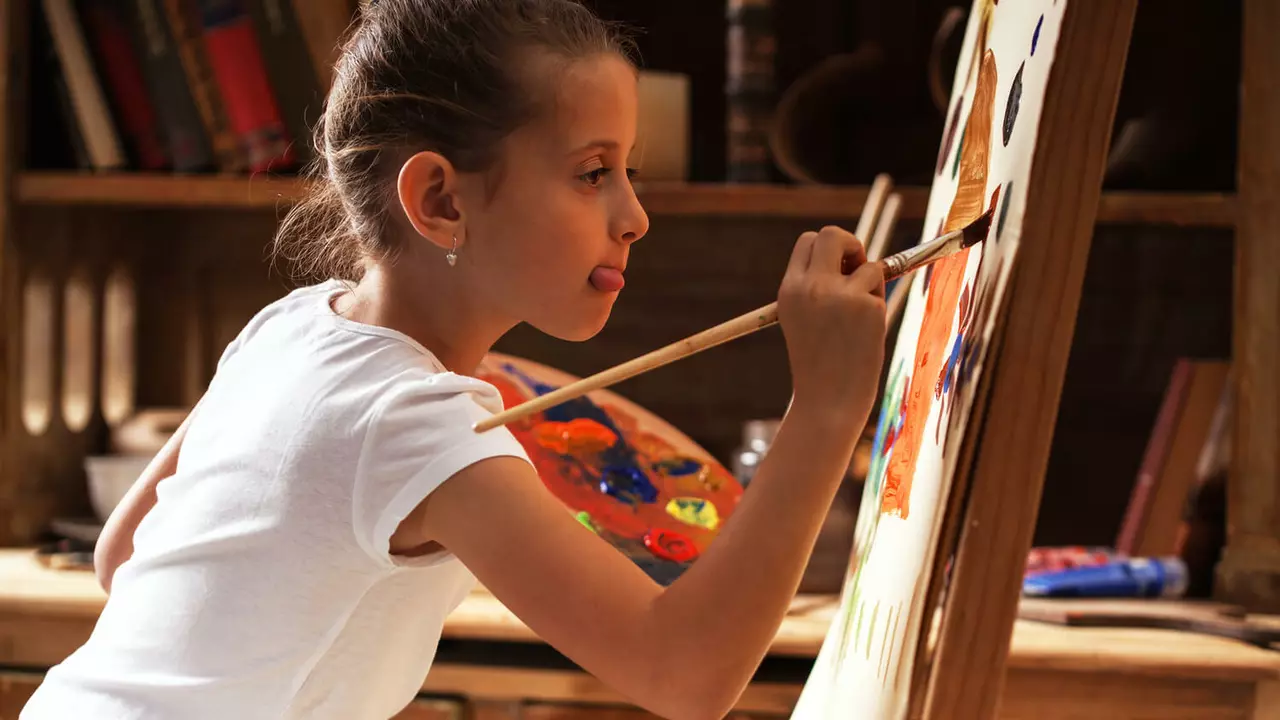
How does art make a kid better in their life?
Unleashing Creativity: Art & Kids
Well now, I've been a father to a wonderful little lady, Mathilda, and I can attest first hand to the relevance of art in a child's life. But let me tell you this, the benefits of art in children's lives go far beyond creating a pleasing picture on the fridge or creating a symmetry-inspired snowflake. It's about nurturing creativity, developing critical thinking skills, boosting self-esteem and teaching children to express themselves in a non-verbal manner.
Art is a universal language that transcends cultural, age and linguistic barriers, allowing children to communicate their feelings, ideas, and thoughts through mediums such as drawing, painting, sculpture, or even collage. Art has, therefore, been encouraging self-expression in children since the dawn of mankind; cave paintings anyone?
Art, emotions and self-expression
In the vast scope of the human emotional landscape, art acts as a potent medium for children to articulate these emotions when words fail. Often, children who are introverted or have difficulty verbalizing their feelings may find solace in expressing themselves creatively. And you know what, studies have shown that children who regularly engage in artistic activities are more likely to develop stronger problem-solving skills; more than mere coloring inside the lines, eh?
Art is a catalyst for children to develop and nourish their emotional intelligence. They observe, they interpret and they share through their creative ventures. The colors they choose, the images they create, the intensity with which they manipulate their tools; all these factors tell a story of their emotional state at that very moment. And that my friends, is therapeutic and informative.
Art and cognitive skills
Did you know that Leonardo Da Vinci used to stare at walls and imagine entire scenes on blank surfaces? This exercise significantly improved his imaginative power and visualization skills. Sounds like an easy and fun task to involve your kids in, right? Interestingly, exposure to art fosters cognitive development in children. They learn to imagine, think out-of-the-box, and their observational abilities are enhanced.
And there's more. Children who invest time in creating art are found to perform better in academics. The evidently creative aspects of art are undeniably tied to other learning areas such as reading, writing, and arithmetic.
Molding that social butterfly: Art and social skills
One of the most underestimated aspects of art's impact on children, I've found, involves its role in developing social skills. Collaborative projects such as mural painting or creating a class collage allow kids to learn team dynamics, collective decision-making, negotiation, and compromise. Funny to think how a simple painting session could effectively teach your kid the same skills required for diplomacy, huh?
The exchange of ideas intrinsic to cooperative art also encourages empathy and tolerance as children learn to value perspectives different from their own. The experience is vital in nurturing the acceptance of diverse points of view in the ever-increasing globalized world we live in.
Art and Motor Skills Development
Any parent who has tried to remove a stubborn cap from a bottle of ketchup would appreciate the importance of fine motor skills. Now, imagine a child holding a paintbrush or crayon. The simple act of painting or drawing aids in enhancing hand-eye coordination, manual dexterity, and encourages fine motor developments. It's like having a mini-gym session for hands and fingers!
Even activities like kneading clay or tearing paper for collages can result in stronger hand muscles. And these skills are not just important for future artists but also for everyday tasks like tying shoelaces or using cutlery. And yeah, opening those stubborn ketchup bottles too!
Life is basically a Canvas, Treat it Like One!
Learning to create and appreciate visual aesthetics is more important than ever to the development of the next generation of children as they grow up. Art plays a significant role in molding our children into well-rounded human beings. Art doesn’t merely have to exist only in the hallways of museums and galleries. Our homes and lives too can be the canvases for our children to paint their thoughts, their feelings and their creativity.
And remember, every child is an artist. The problem is how we remain an artist as we grow up. So let's give our children the tools to stay artists in their hearts forever!
Happy Ending: My Own Canvas
Like a karate chop from the universe, I had my Eureka moment when I once found Mathilda staring at a blank wall. On inquiry, she told, she was imagining a beautiful garden there. I decided then and there, to turn that wall into a giant canvas. So, Mathilda and I painted a garden, with flowers, bugs, and a big blue sky.
The result? Besides a beautiful mural, and numerous paint stains on the carpet, I saw Mathilda transform. She started expressing more, her scores in school improved, she opened up, made more friends, and any sadness or frustration would find its way onto her sketchbook. So, our wall painting project was not just an art project—it was growth, expressed freely on our wall.
Brush Strokes: The Final Word
To wrap up, art is not just an extracurricular activity to engage kids during the summer break. It catalyzes a child's holistic development nurturing their cognitive, social, and fine motor skills. Plus, it enables them to channel their thoughts and emotions in a constructive way.
Art helps children connect with themselves and the world in a way no other subject can. It is priceless. So, I highly recommend opening the doors of the artistic world to your kids. And remember, the fun in art is not getting the perfect picture, it's in the chaos of creation. So let's foster the chaos!
Write a comment